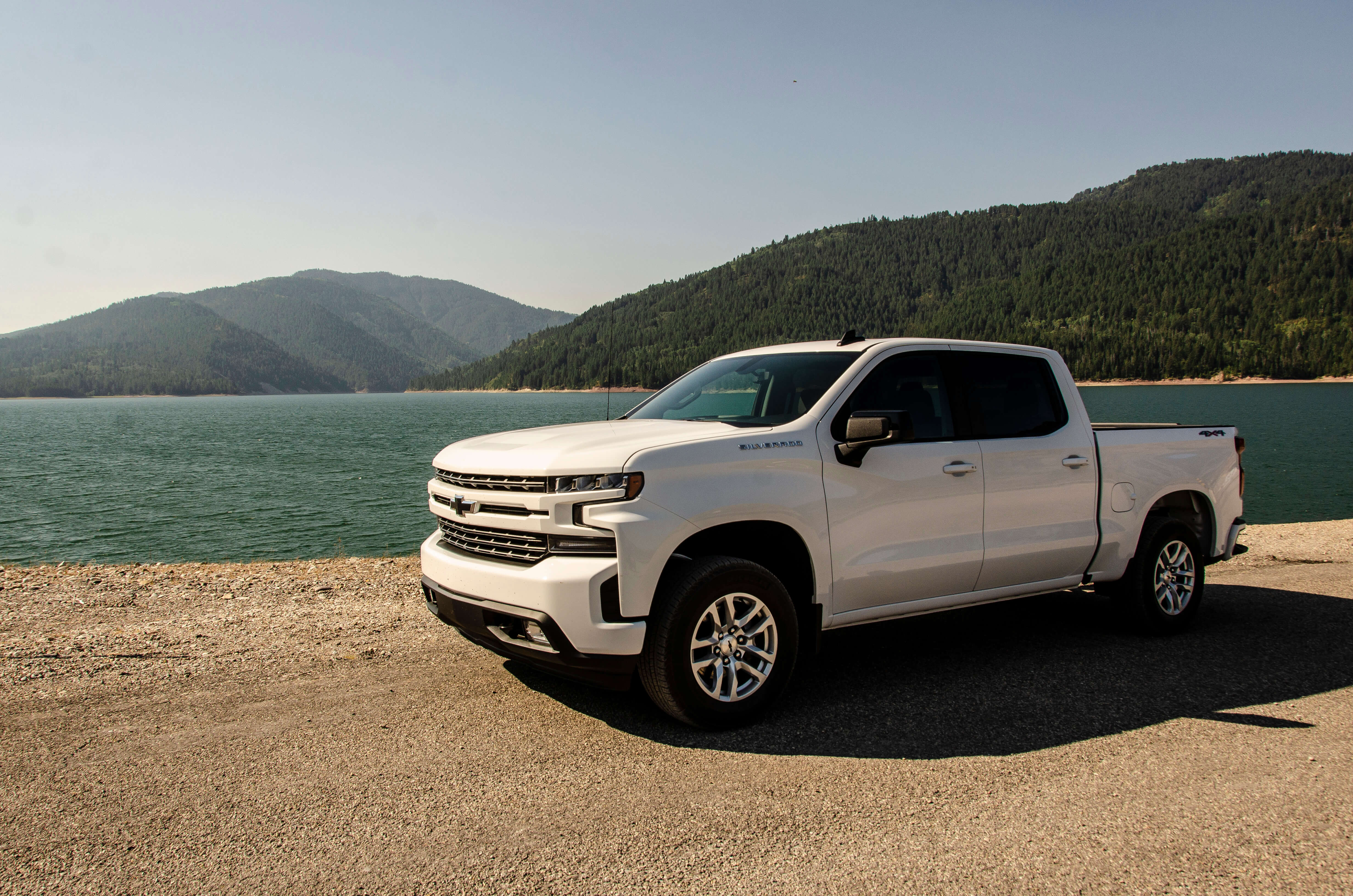Buckle up folks…this could be the shortest Chevrolet truck review in history.
“If you tow or haul, if your truck works for a living and is more than a showpiece, buy this engine”.
If that’s what you came for, you can stop reading right now. But if you’re curious…
Why is the 3.0L Duramax so awesome? Because unless you’re building a custom lifestyle truck or simply using it for basic tasks you’ll be no doubt upgrade to more powerful engine when you buy your next Silverado or Sierra. That means either the famous 6.2-liter V-8 gas engine or this all-new 3.0L Duramax Turbo-diesel 3.0-liter diesel with its 277 HP, 460 torques and 9,300 pound towing capacity.

If your truck is a lifestyle statement—and we have zero problems with that—this may not apply to you. That is, unless you’re from Texas where a better engine is as necessary as church on Thursday, guns, and football. Our vote, as the upgrade cost is the same $2,495 as for the 6.2L gas engine, is the new 3.0-liter inline six-cylinder diesel. It has the same torque, better fuel economy (we expect) and even has a sweet engine exhaust sound.
Chevrolet invited GM-Trucks to Bend, Oregon to test the 2020 Silverado and it’s new diesel engine. Don’t worry if you just bought a 2019 Silverado—there are no huge differences for 2020; the truck was only released a few months ago. So, for 2020 Chevy adds adaptive cruise control and the amazing 15-view camera technology that includes “invisible trailer” from the Heavy Duty segment. We covered that.
For 2020 Chevrolet offers a diversity of engines. There are, in addition to the new diesel, the 310 horsepower / 348 lb-ft 2.7-liter DI turbocharged I-4 with an 8-speed transmission, and two legendary small block gas engines, the 5.3L and 6.2L.
In Model Year 2020 the 5.3L makes 355 horsepower (265 kW) and 383 lb-ft of torque (519 Nm) coupled to an 8-speed transmission, the 6.2L is SAE-certified to deliver 420 HP (313 kW) and 460 lb-ft of torque (623 Nm). It is paired with GM’s 10-speed transmission, which couples perfectly with GM’s DFM cylinder deactivation system. Hey, you don’t think you can run on two cylinders with an ordinary transmission, do you?

According to Chevrolet the new diesel motor will be available in LT, RST, LTZ and High Country trim levels. The 5.3L gas engine is standard in LTZ and High Country models and available on LT, RST and Trail Boss. The 6.2L gas gasser is available more trim levels for 2020. Both engines will be built at General Motors’ Tonawanda Engine Plant in Buffalo, New York.” Not mentioned is the carryover 4.3L engine aimed at fleet owners.
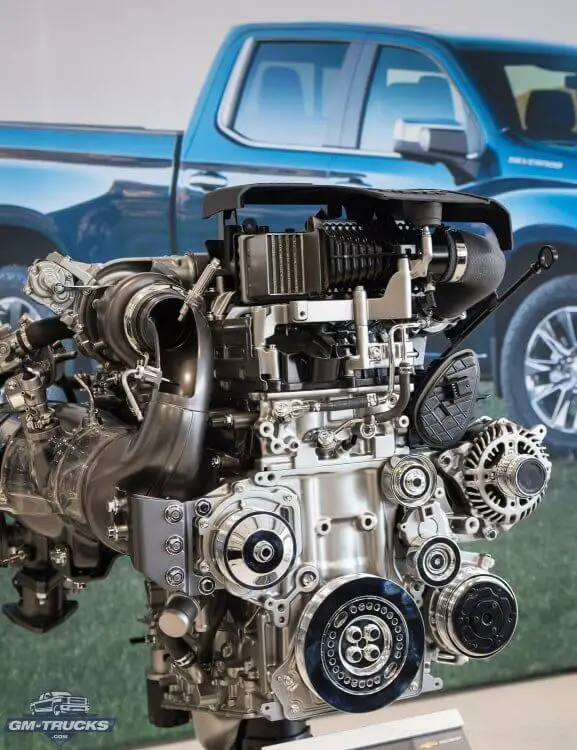
We arrived in Oregon to 80°F heat and blue skies, then were fed and watered, and set off on different tasks. We can’t talk about the HD trucks and their massive towing capacity for a couple of days. We were offered an incredibly deep-dive into the new engine, and a mileage competition featuring the new 3.0-liter diesel engine to start, however. Winning a comp is cool, but not realistic when you have a limited time with a vehicle in the first place. That said, other journalists did take the time to compete and Sunday’s winning mileage was in the 34-36 mpg range and then blown away by Monday’s 46 mpg. That, friends, is some serious hypermiling! However we still do not have official EPA certified mileage. That’s “To Come”.
If you haven’t read much about the 3.0, here’s a modestly deep dive into its guts. First, the whole engine is state-of-the-art, aluminum head and block with thin steel cylinder sleeves and seven main bearings for the crankshaft. Combustion processes were among the driving forces underpinning design theory, so the cylinder head is essentially flat and the bowl-shaped pistons have zero relief cuts for the valves. That was important for efficiency.

Simulation, and single-cylinder engine studies showed that having very vertical valves would not only allow a simpler bowl shape in the pistons, but that very shape would allow inlet-generated swirl to be maximized at every point. Swirl is produced and governed by dual intake runners feeding each cylinder. Oh, the ceramic glow plugs gave GM the highest compression ratio consistent with power and emissions, as well as allowing ignition to -22°F without a block heater. FYI, most of the engine development and engineering, as well as primary calibration took place in Turin, Italy. That’s GM’s center of diesel excellence.
To ensure a quiet engine, emissions that more than meet standards, and deliver fuel economy, GM finalized an injection pressure of 2,500 bar (36,500 psi) through solenoid injectors capable of up to ten injections per combustion cycle. Early injections are primarily used to build in-cylinder pressure smoothly to abate diesel clatter. Later injections can be used for power and to keep the catalyst working within specified temperatures (those injections, sometimes caused by a catalyst cooled by highway driving, do negatively affect fuel economy but maintain emissions specifications).
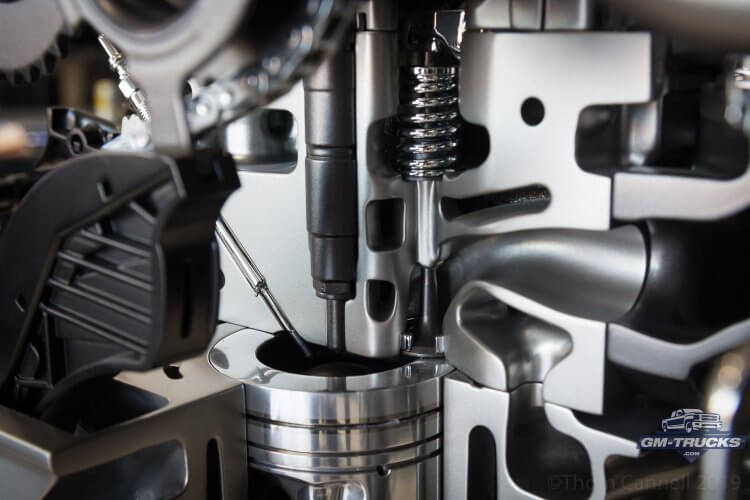
There’s a single close-coupled VGT turbo, for now, which indicates a possibility for later development of greater power and torque. Packaging to the “chemical factory” is as tight as could be manufactured
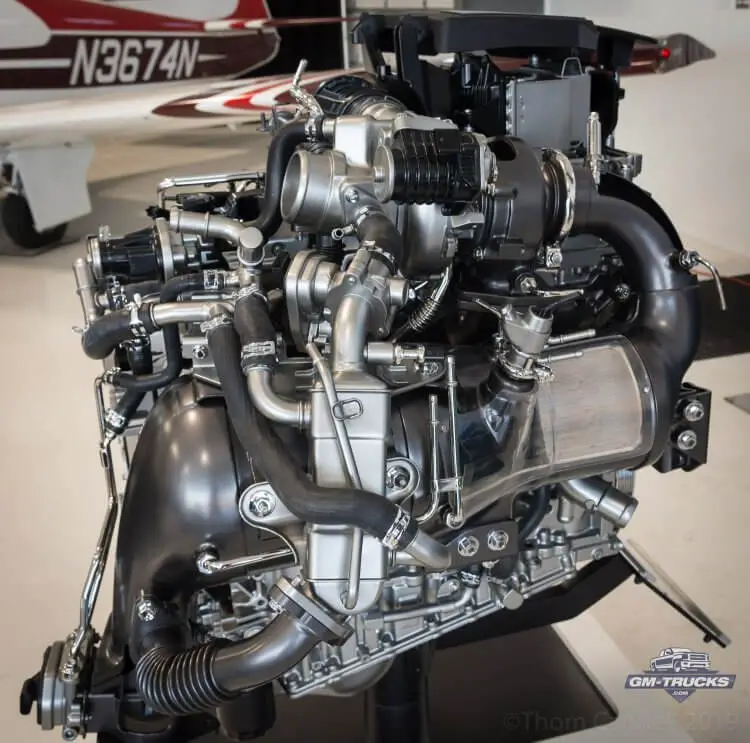
What we really haven’t talked about is the decision for an I-6 engine, versus a V-type. Obviously, six cylinders are longer than three, or even four. This slightly under-square engine delivers two things that a V design does not: smoothness and less side force. A V-type engine necessarily produces some side thrust, which is one of the reasons that Ford’s new 3.0L is made of CGI or Compacted Graphite Iron. In contrast, by using a robust, deep skirt design, Chevrolet and other divisions have an all-aluminum block, saving weight. Some of the extra length is minimized by packaging chain driven shafts at the rear.
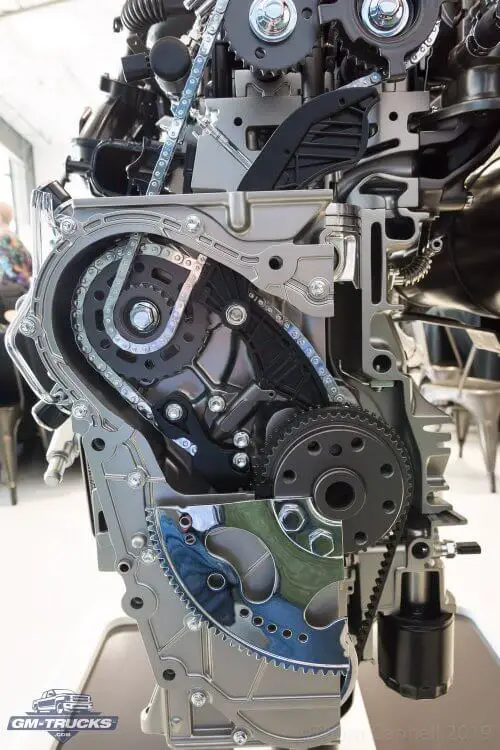
If you’ve never driven, or better yet heard an inline six, they’re smooth, likely the smoothest engine you’ve driven and with a unique sound. Both delivered by six evenly spaced exhaust pulses. The last I-6 engine GM produced was the gasoline Atlas LL8/Vortec 4200 used in Chevy Trailblazer, GMC Envoy, Buick Rainier, Olds Bravada, Isuzu Ascender and Saab 9-7X. ) Note that Detroit Diesel has produced an inline-6 since 1980 that displaces 11-14L.)
Before highway driving, we did a walk-around. The GM-exclusive Durabed is impressive, and hard-coated for scuff resistance. Chevrolet says it’s made up of several sections instead of 1-2 deep drawn pressings. This provides owners with more cargo volume. As Chevrolet (and GMC) will tell you, it’s made of several varieties of High Strength Steels, so they claim it’s more dent and penetration-resistant than Ford’s aluminum bed. Inside the bed are 12 fixed tie-down points and nine moveable points, which has been a big hit with owners. Plus there’s that available power up/down tailgate, a power outlet and task lighting. A somewhat unnoticed feature is relocating the bed lights to flank the CHMSL on the roof edge. A couple of other things that are important are the corner steps and bed steps. They’re made for size 13 steel-toed boots and hold up to 500 pounds.

We then drove the truck on the highway and on two-lane roads. Our first impression was of the powerful engine sound, followed by impressive torque. Electric motor type torque. Smooth power available at the lowest of engine speeds.
Engine noise isn’t intrusive but like the torque, off the line it lets you know it’s there. However, with an open hood you hardly know it’s a diesel, it is that quiet. Even a random enthusiast who had been researching the new 3.0L Duramax and stopped us at a boat launch had to ask if it was a Diesel. This is simply unlike the larger Duramax and any other light duty diesel on the market.

Something we’ll get into in our Heavy Duty story is the reason there’s a 10-speed transmission. If you think about the power band of a diesel engine, here delivering all of its 460 lb-ft of torque at just 1,500 rpm and holding strong to about 4,000 rpm, that’s significantly different than the power band of a gas engine. Thus, the 10-speed maximizes power and fuel economy—and every automaker has to deliver fuel economy, low CO2 and clean emissions.
We have much more to come. For instance, we need to see if tow ratings are realistic, if its EPA fuel economy beats Ford’s 30Highway/22City/25Combined and how well it lives up to the Find New Roads slogan in real world driving under every condition we can discover.

